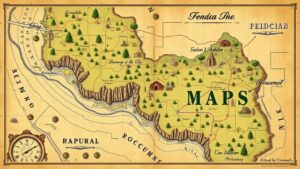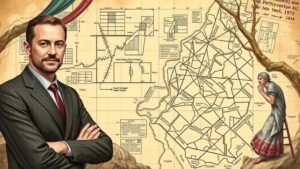Mining Historical Carriage Workshop Logs for Early Transportation Tools
Mining Historical Carriage Workshop Logs for Early Transportation Tools
The study of historical logs from carriage workshops provides invaluable insights into the development of early transportation tools. These logs serve as primary sources, detailing not only the craftsmanship involved in creating carriages but also the sociocultural dynamics surrounding transportation in various eras. This article explores the significance of these logs, the methodologies for analyzing them, and the implications of findings for our understanding of transportation history.
Significance of Carriage Workshop Logs
Carriage workshop logs represent a crucial administrative tool used by craftsmen, documenting the types of vehicles produced, materials used, and labor invested. e records not only help trace the evolution of transportation tools but also paint a broader picture of economic conditions, technological advancements, and regional variations in craftsmanship.
- The logs offer a detailed chronology of workshops, such as the renowned Samuel W. Smith & Sons in Philadelphia, operational from 1820 to 1860.
- They provide data on tools and materials, revealing shifts in technology and the introduction of new materials like iron and rubber springs in the late 19th century.
Methodologies for Analysis
To analyze these historical logs, researchers apply a combination of qualitative and quantitative methodologies. This multidisciplinary approach includes:
- Textual Analysis: Researchers examine the language and terminology used in the logs to understand industry standards and practices.
- Data Mining: Relevant data is extracted from large sets of logs, allowing researchers to quantify trends such as the number and types of carriages produced yearly.
- Comparative Studies: By comparing logs from different regions, researchers assess how local resources and demands shape craftsmanship.
Historical Context and Case Study
In examining the records from the Thomas Carr workshop in London, which operated from 1805 to 1840, it becomes clear how the advent of the Industrial Revolution impacted carriage production. With the introduction of steam-powered machinery in the 1820s, efficient production methods emerged, leading to the following developments:
- Increased production capacity–from 25 to over 100 carriages annually.
- Standardization of designs, leading to a proliferation of the “Victoria” carriage model, which became immensely popular among the elite.
These case studies reveal crucial connections between technological advancements and changes in societal transportation needs during this transformative period.
Implications of Findings
The findings from carriage workshop logs have several broader implications:
- Cultural Insights: Understanding the societal context of transportation reveals how mobility influenced social interaction and urban development.
- Historical Economic Patterns: Patterns in production and sales reflected broader economic trends; for example, an uptick in carriage manufacturing often correlates with economic booms.
- Technological Evolution: The logs demonstrate not only craft quality but also a timeline of technological progress in the industry.
Real-World Applications
Current transportation studies benefit significantly from these historical analyses. Urban planners, historians, and technologists can apply lessons learned from past innovations in carriage workshops to address modern transportation challenges. For example, understanding how early manufacturers adapted to changes in consumer demand can inform sustainable practices within today’s automotive industry.
Conclusion
Mining historical carriage workshop logs is essential for understanding early transportation tools and broader socio-economic trends. By employing rigorous methodologies to analyze these logs, researchers uncover patterns that enrich our historical context. As transportation evolves in the 21st century, the lessons drawn from these historical documents can guide future innovations and policy-making strategies in mobility.
Actionable Takeaways
- Scholars should prioritize the preservation and digitization of historical logs to facilitate easier access for research.
- Interdisciplinary studies that merge history, economics, and engineering can yield richer insights into the evolution of transportation.
- Modern practitioners in the transportation sector can leverage historical case studies to inform future designs and policies for sustainable practices.



